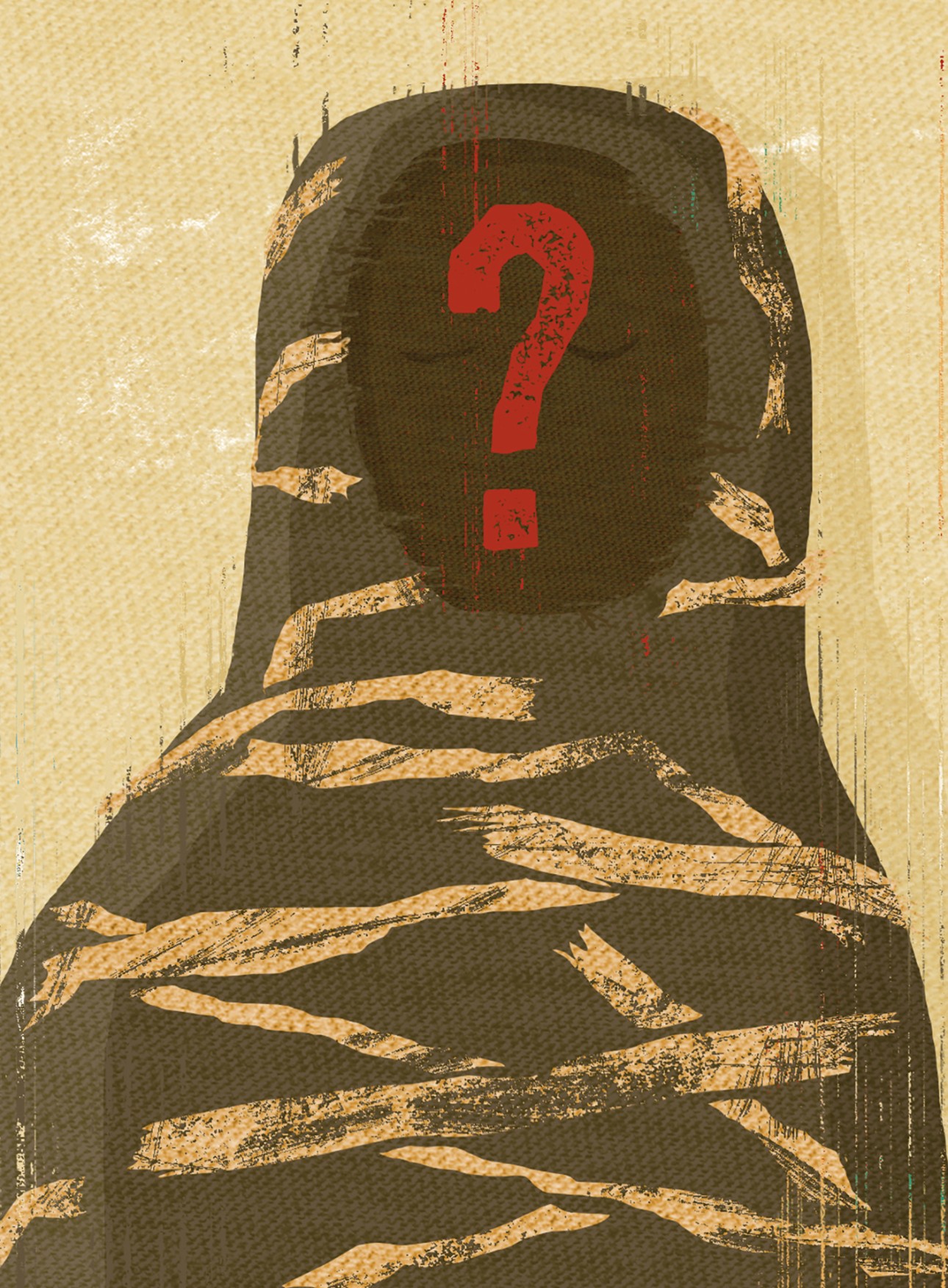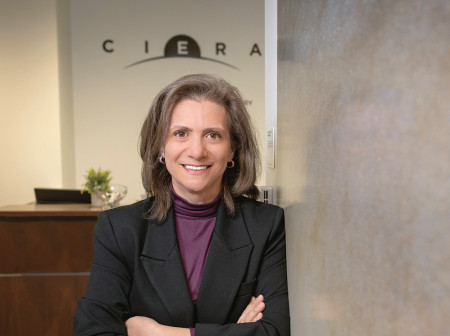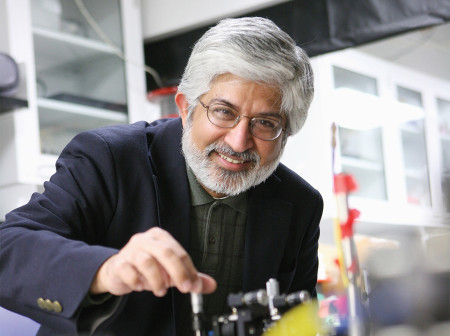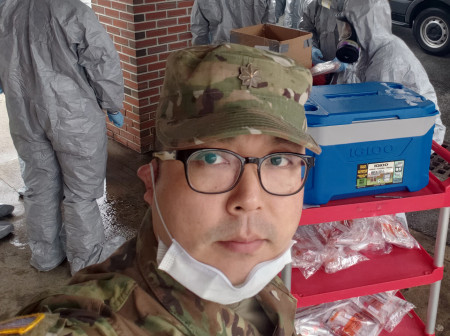Essi Rönkkö was exploring the Garrett-Evangelical Theological Seminary’s resources on mummy portraits when she made a startling discovery: The seminary had in its collection a young girl mummy with an intact portrait.
Rönkkö, curatorial associate for special projects at the Block Museum of Art, was researching mummy portraits, which feature a lifelike painting of the deceased person incorporated into the mummy wrappings and placed over the face. Her discovery launched an interdisciplinary research project for Northwestern scientists and students to study the nearly 1,900-year-old Roman-Egyptian mummy — one of only about 100 portrait mummies in the world.
A class of humanities and materials science undergrads worked to unravel some of the mummy’s mysteries, and their research culminated in the ongoing Block Museum exhibition Paint the Eyes Softer: Mummy Portraits from Roman Egypt. The exhibition, which runs through April 22, also showcases mummy portraits from the Phoebe A. Hearst Museum of Anthropology at the University of California, Berkeley, which the students visited last fall.
Along with the students’ research, scientists at the Argonne National Laboratory used pioneering X-ray scattering technology to learn more about the mummy in November. The 15-hour experiment — the first of its kind performed on a human mummy — used the extremely brilliant high-energy synchrotron X-rays produced by Argonne’s Advanced Photon Source to probe the materials and objects inside the mummy, while leaving the mummy and its wrappings intact. The researchers detected embedded wires and studied a solidified pitch-like substance in the mummy’s skull.
“This is a unique experiment, a 3-D puzzle,” says Stuart Stock, a professor of cell and molecular biology at the Feinberg School of Medicine who led the experiment at Argonne. He hopes their analysis can help researchers understand more about the mummy’s history and how best to conserve it.
Unearthed in 1911 at Hawara, Egypt — an archaeological site 50 miles south of modern Cairo — the 3-foot-long, 50-pound mummy was given to the Western Theological Seminary of Chicago. Its collections were later purchased by Garrett-Evangelical, which is located on Northwestern’s Evanston campus and has loaned the mummy to the University.
“Intact portrait mummies are exceedingly rare, and to have one here on campus was revelatory for the class and exhibition,” says Marc Walton, a research professor of materials science and engineering. He taught the fall quarter class Materials Science and Socioeconomics of Portrait Mummies from Ancient Fayum with Taco Terpstra, assistant professor of classics and history.
The researchers do not know how the girl died, but it is likely she perished from disease. A CT scan at Northwestern Memorial Hospital last August gave the researchers a 3-D map of the structure of the mummy and enabled them to confirm that the girl died at approximately 5 years old. Terpstra said life expectancy at the time was about 25 years old; just half of all children made it to 10.
“This is a once-in-a-lifetime opportunity for our undergraduate students — and for me — to work at understanding the whole object that is this girl mummy,” says Walton. “Today’s powerful analytical tools allow us to nondestructively do the archaeology scientists couldn’t do 100 years ago.”
The findings will help researchers and historians better understand the context in which the mummy was excavated in 1911 as well as Roman-period mummification practices. Discovering what materials and practices were used in the mummification process can illuminate the culture, trade networks and commerce in the Roman Empire of the late first and early second centuries.
“We’re basically able to go back to an excavation that happened more than 100 years ago and reconstruct it with our contemporary analysis techniques,” Walton says. “All the information we find will help us enrich the entire historic context of this young girl mummy and the Roman period in Egypt.”
Students in the class analyzed paint, soil, fiber and bone structure of the mummy and did qualitative analysis of the social and historical context of the its discovery. “As a classics major, my research is delving into topics that have been studied for thousands of years, so it’s sometimes difficult to feel like I’m making new discoveries,” says Cecilia Wilson, a senior. “This opportunity to do genuinely groundbreaking research into ancient history in such an interdisciplinary manner has been so rewarding.”




Reader Responses
No one has commented on this page yet.
Submit a Response